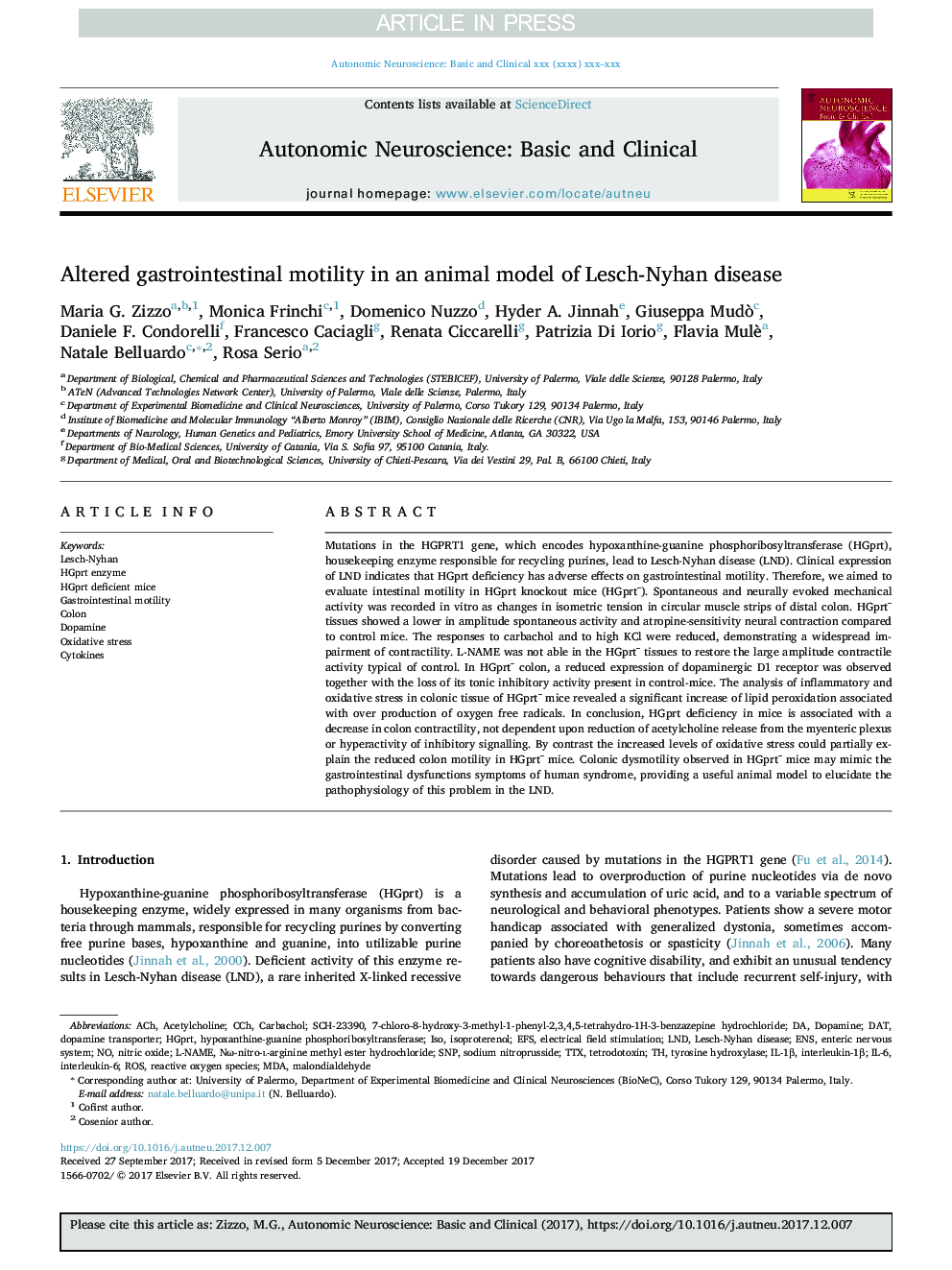| Article ID | Journal | Published Year | Pages | File Type |
|---|---|---|---|---|
| 8681042 | Autonomic Neuroscience | 2018 | 10 Pages |
Abstract
Mutations in the HGPRT1 gene, which encodes hypoxanthine-guanine phosphoribosyltransferase (HGprt), housekeeping enzyme responsible for recycling purines, lead to Lesch-Nyhan disease (LND). Clinical expression of LND indicates that HGprt deficiency has adverse effects on gastrointestinal motility. Therefore, we aimed to evaluate intestinal motility in HGprt knockout mice (HGprt¯). Spontaneous and neurally evoked mechanical activity was recorded in vitro as changes in isometric tension in circular muscle strips of distal colon. HGprt¯ tissues showed a lower in amplitude spontaneous activity and atropine-sensitivity neural contraction compared to control mice. The responses to carbachol and to high KCl were reduced, demonstrating a widespread impairment of contractility. L-NAME was not able in the HGprt¯ tissues to restore the large amplitude contractile activity typical of control. In HGprt¯ colon, a reduced expression of dopaminergic D1 receptor was observed together with the loss of its tonic inhibitory activity present in control-mice. The analysis of inflammatory and oxidative stress in colonic tissue of HGprt¯ mice revealed a significant increase of lipid peroxidation associated with over production of oxygen free radicals. In conclusion, HGprt deficiency in mice is associated with a decrease in colon contractility, not dependent upon reduction of acetylcholine release from the myenteric plexus or hyperactivity of inhibitory signalling. By contrast the increased levels of oxidative stress could partially explain the reduced colon motility in HGprt¯ mice. Colonic dysmotility observed in HGprt¯ mice may mimic the gastrointestinal dysfunctions symptoms of human syndrome, providing a useful animal model to elucidate the pathophysiology of this problem in the LND.
Keywords
IL-1βMDALesch-Nyhan diseaseHGPRTLNDSCH-23390ENSCCHTTXEFsDATIL-6l-NAMENω-nitro-l-arginine methyl ester hydrochlorideROSAChAcetylcholineDopamine transporterISOisoproterenolinterleukin-6Interleukin-1βtetrodotoxinGastrointestinal motilityElectrical field stimulationOxidative stresstyrosine hydroxylaseDopamineCytokinesenteric nervous systemmalondialdehydesodium nitroprussideNitric oxidehypoxanthine-guanine phosphoribosyltransferaseSNPCarbacholColonReactive oxygen species
Related Topics
Life Sciences
Neuroscience
Cellular and Molecular Neuroscience
Authors
Maria G. Zizzo, Monica Frinchi, Domenico Nuzzo, Hyder A. Jinnah, Giuseppa Mudò, Daniele F. Condorelli, Francesco Caciagli, Renata Ciccarelli, Patrizia Di Iorio, Flavia Mulè, Natale Belluardo, Rosa Serio,
